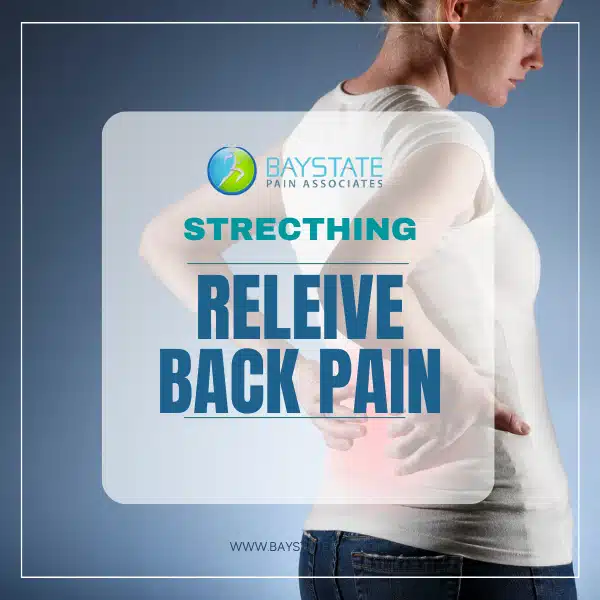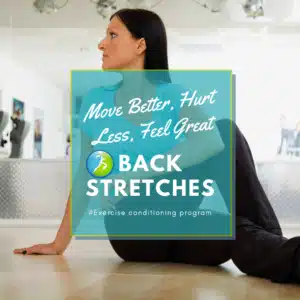How to Relieve Back Pain Through Stretching?
Important to the exercise routines of all who deal with backs is to routinely stretch the muscles, tendons, and ligaments that support the spine. Different doctors and physical therapists may recommend exercises designed to soothe aches in the neck and back.
Stretching benefits
- Spinal muscle strain, one of the most common conditions behind lower back pain, is alleviated by releasing tension from the muscles of the spine.
- Allowing improved flexibility and greater mobility
- Reducing risk of disability caused by back pain
You might have to stretch for hours or even days to help combat pain that lasts for more than 3 months. Stretch may be part of a physical therapy regimen, or recommended to be done on a daily basis, alone or at home.

General Tips for Stretching to Relieve Back Pain:
With these tips in mind, you can effectively stretch your muscles without hurting yourself:
- Dress in comfortable clothes that will not limit movement.
- The goal should be to maintain flexibility but not create pain by placing the body in positions it cannot comfortably accommodate.
- Advance gradually and avoid overcompensating in your stretch to avoid overstretching, which can cause muscle soreness.
- Stretching on a clean, flat surface, wide enough to accommodate both you and your movement.
- To adequately lengthen muscles and improve range of motion, hold stretches for at least 15-30 seconds.
- Repeating a stretch from two to five times—usually after four repetitions, the muscle reaches its full elongation.
- Perform stretches one at a time and stretch both sides of the body separately.
For your convenience, below are some common stretches targeting the neck, upper back, and lower back.
Neck and Shoulder Stretches:
It is a great idea to practice basic neck stretches on a regular basis – it can be done anytime and in any location. For example:
Flexion stretch—Chin to Chest:
Take a breath and as you exhale, bring your chin towards your chest and arch your head towards the ceiling. Once you feel a stretch in the back of your neck, you can release the tension and take a breath.
Lateral Flexion Stretch—Ear to Shoulder:
Slowly and gently twist your neck so that the ear touches the shoulder and continue the movement until you feel a stretch in the neck. Hold your shoulders back and in place as you lean slightly forward in a healthy position.
Levator scapula stretch:
Press one arm against a wall or doorjamb, just below the shoulder with the elbow bent. Flip the head over so it is on the opposite side and wait. Drop the chin down and back, so that it comes close to your collarbone to feel a stretch in the back of your neck. It may be helpful to pull the head gently forward with the other hand to stretch the muscle.
Corner stretch:
Put your hands against the two corners of the room. The height of your elbows should be about shoulder level. Finally, tilt your head forward until you feel a stretch under your collarbone.
Dangerous stretches to avoid include rolling the head around the neck in a circular motion or performing the neck by repeatedly going in and out of range. When done improperly, these stretches can be problematic and cause muscle strain.
Stretches for Low Back Pain:
Back Flexion Stretch:
Lying on your back, pull both knees to your chest while flexing your head forward until you feel a comfortable stretch across your back.
Knee to Chest Stretch:
With both feet on the floor, pull one leg close to the chest and stretch the gluteus and piriformis muscles.
Kneeling Lunge Stretch:
Standing on both knees, step one leg in front of the other so the foot is flat on the ground, weight evenly distributed through both hips. Keep one hand on the top of the thigh, and lean the torso over with the other hand for a stretch. A muscle located in the pelvic region called the hip flexor muscle affects posture if too tight.
Piriformis Muscle Stretch:
Kneel on the floor and lie on your back with your knees bent and both heels on the floor. Rest one ankle on the other, knee bent, and then gently pull the other knee toward the chest until you feel a stretch in the buttocks. Alternatively, lie on the floor and put one of your legs on top of the other, so your ankle crosses over your other knee.
The examples listed above are types of stretches commonly prescribed. Typically, stretches can be adjusted to the level of a person’s pain and tightness. Additionally, stretching is often more effective when it is done with a wall, door jamb, or chair to aid instability.
For those looking for treatment of their lower back pain, then Dr. Algendy at Bay State Pain Associates is here to help. Please call (508) 4362555 to schedule an appointment or consultation.


